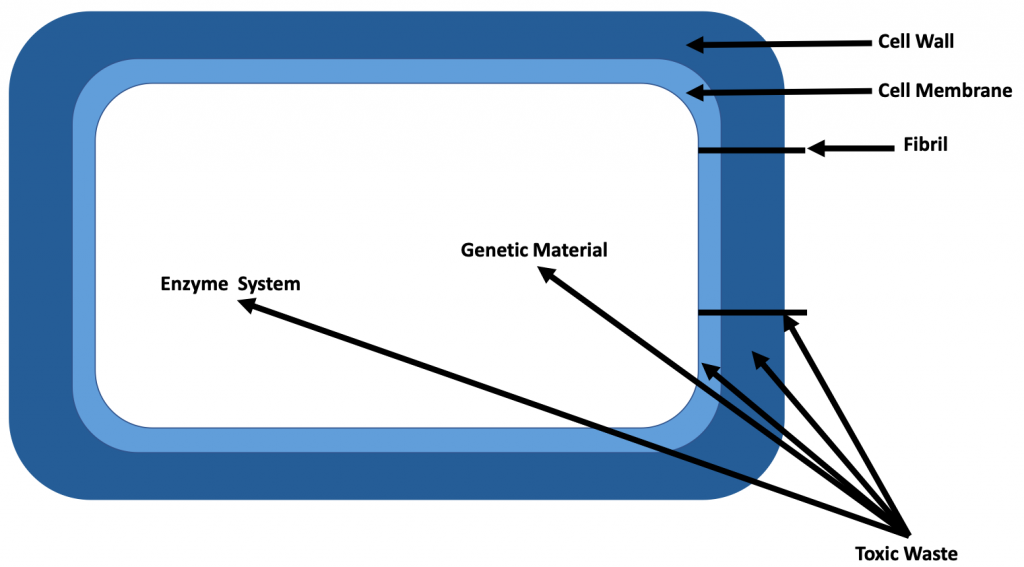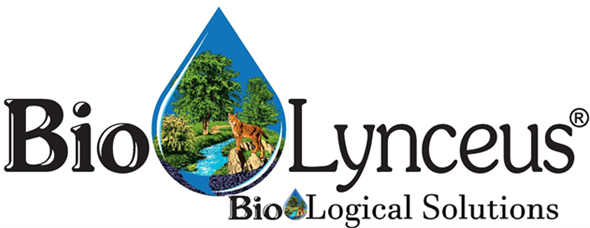Mechanical WWTP .06 MGD
Wastewater treatment utilities receiving inputs from industrial and anthropogenic sources are highly susceptible to toxic waste inputs. Toxic loads are often sporadic and can be extremely devastating to the biomass in treatment facilities.
The book Wastewater Bacteria, by Michael Gerardi explains that toxicity impacts microbial cellular structure and activity (Figure 1).1 Toxicant presence in wastewater is known to inhibit biological treatment, specifically, biological oxygen demand (BOD) removal and nitrification.
To restore efficient wastewater processing, wastewater operators can augment their systems with a concentrated and diverse consortium of wastewater microbiology.
The following case study discusses the implementation of ProBiotic Scrubber® II (PBII) as seed to restart a mechanical wastewater treatment plant (MWTP) after a series of toxic hits.

Figure 1. Toxic impacts on a bacterial cell. Toxicity inhibits cellular structure and activity. Fundamental cell structures inhibited by toxic waste include cell wall, cell membrane, fibrils, and genetic material. Essential cellular activities impaired are enzymatic activity and regulation of genetic material.
A 0.06 MGD MWTP in Utah was struggling with weekly toxic hits that were killing off the biomass in their system. The facility serviced a large resort that received thousands of visitors annually and a local distilling operation.
Toxicity at the plant sourced from extremely high biological oxygen demand (BOD) and fats, oils, and grease from the resort.
Additionally, the chemicals and surfactants in the influent from the distillery were poisoning the biology. These toxic waste inputs prevented a stable biomass from establishing in the system. Without functional biological treatment, the facility’s effluent had frequent high BOD and NH3 concentrations.
I am extremely pleased with the BioLynceus® product and have seen a huge change in effluent quality.
– Plant Manager
The operators added activated sludge from a neighboring plant to restart the system each time toxic waste killed off the biology. Hauling and implementing activate sludge was becoming financially and operationally taxing, so the facility manager sought alternative seeding options.
After reviewing BioLynceus®’ references of work, the management decided to treat their plant toxicity with PBII.
To reinstate efficient wastewater processing after a toxic hit or influent overload, a daily dose of PBII was applied to the MWTP aeration basin for three to five days. The treatment increased the abundance of nitrifying and organotrophic bacteria that helped improve effluent BOD and NH3 levels.
The system’s recovery time from toxic hits was also decreased during bioaugmentation. After multiple successes with PBII, the plant manager reported, “I am extremely pleased with the BioLynceus® product and have seen a huge change in effluent quality.”
Treating toxic upsets with PBII quickly and cost effectively instilled a healthy biomass at the MWTP.
BioLynceus® ProBitoic Scrubber® II provides the biology to treat wastewater plant toxicity.
1 Gerardi, M. (2006). Wastewater Bacteria. Hoboken, New Jersey: John Wiley & Sons, Inc.Pp.173-203. https://www.amazon.com/Wastewater-Bacteria-Michael-H-Gerardi/dp/0471206911
